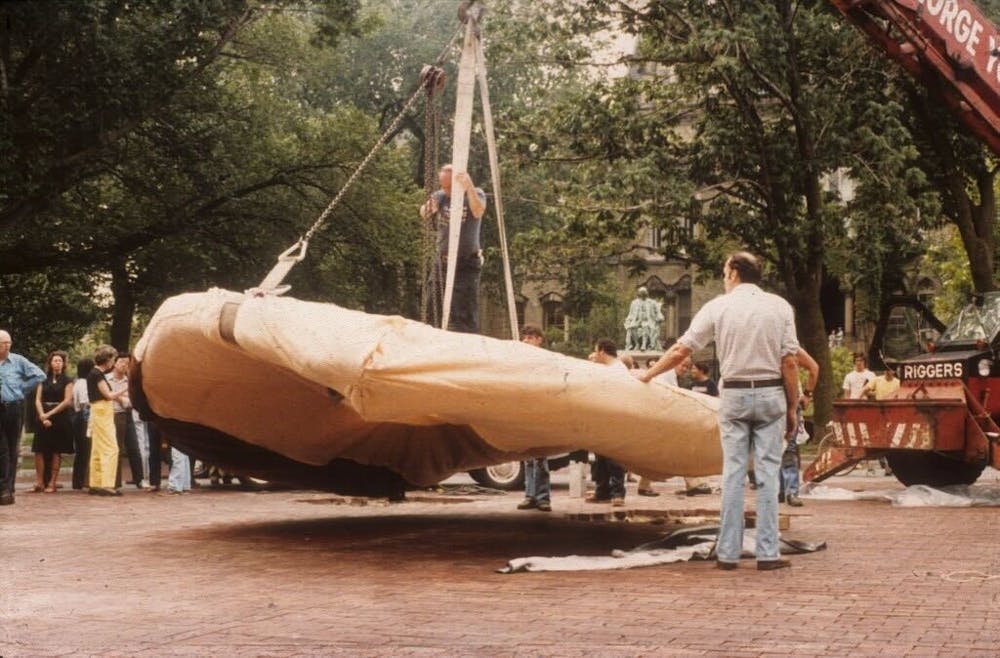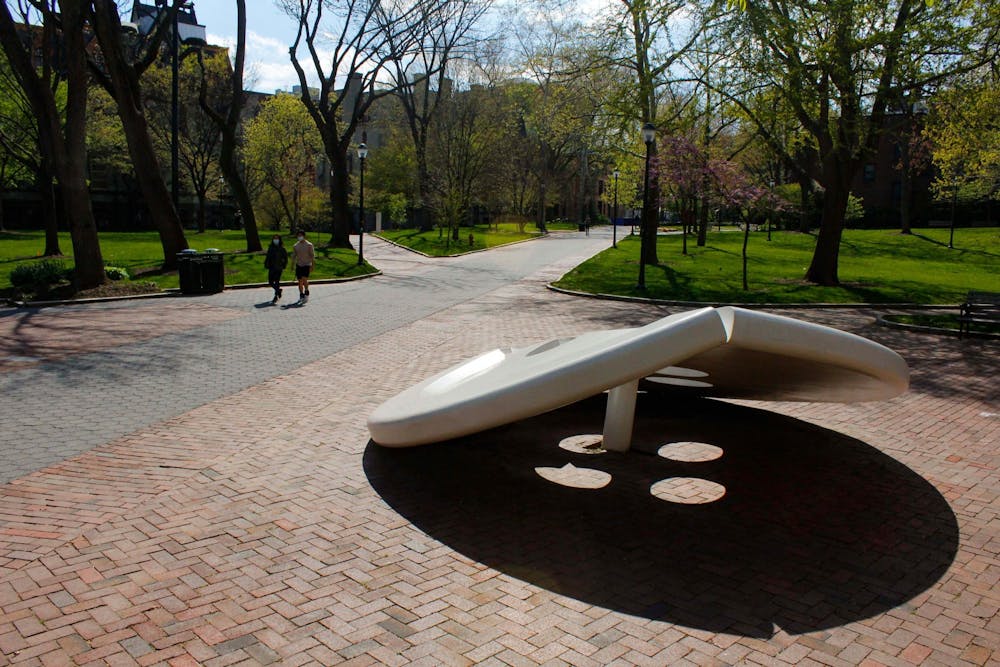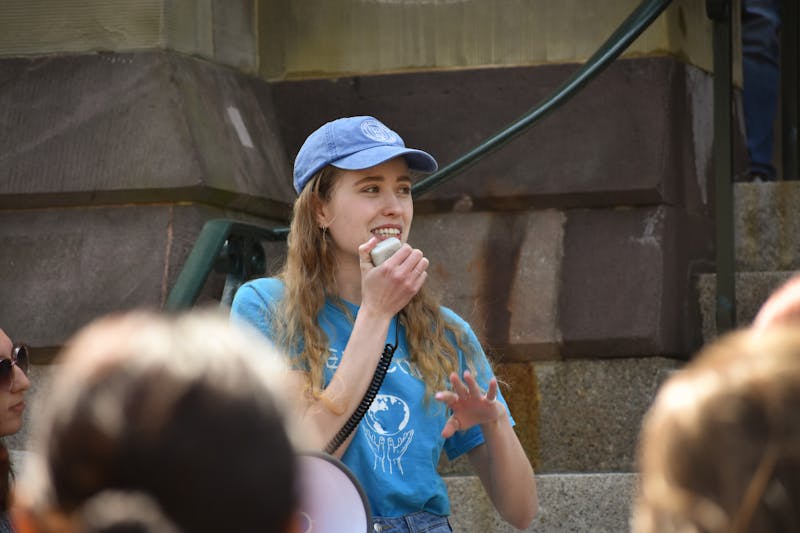
Swedish-American pop artist and sculptor of Penn’s iconic Split Button statue Claes Oldenburg died at the age of 93 at his home and studio in Manhattan on Monday, July 18.
Oldenburg’s works mostly focused on objects associated with human needs and desires rather than people. Constructed in 1981, the Split Button weighs 5,000 pounds and is 16 feet in diameter. Sitting in front of Van Pelt Library, the total cost of the sculpture, including transportation and installation, was $100,000. The sculpture was funded by the University, private donors, and a grant from the National Endowment for the Arts.
"This week the art world has lost one of its most important Pop artists, Claes Oldenburg, who is renowned for his monumental sculptures of everyday objects. We are proud to have his sculpture on campus in the Penn Art Collection and two other works in Philadelphia," said Lynn Marsden-Atlass, curator of the Penn Art Collection.
When it was first installed, the Button faced much criticism, and people critiqued it as “a poor addition to College Green.” Students could not perceive the meaning of the Button and felt that it did not match well with Penn. However, University Architect David Hollenberg told Penn Today that “to have an Oldenberg sculpture right next to more traditional public art pieces like the Benjamin Franklin sculpture on the front steps of the campus is a testament to Penn’s culture. What better place than right in the core of the campus across from College Hall.”
Students claimed that the Button was inspired by when Benjamin Franklin’s button popped off his shirt and rolled away, and split in two while he was sitting on the chair in front of College Green. However, Oldenburg said in an artist statement that “seen from the upper floors of the library, the startling white Split Button creates a focus for the landscaping around it. It’s four holes recall Philadelphia founder William Penn’s design for laying out the center of the city arounds four symmetrically placed parks. While the sculpture has moments to be itself, it often serves as a place to rest or play.”

Oldenburg had many solo exhibitions, such as the one at the Museum of Modern Art in 1969 and several shows in New York, including The Street in 1960 and The Store in 1961. “My intention is to make an everyday object that eludes definition. I’ve expressed myself consistently in objects with reference to human beings rather than through human beings,” he said.
The Daily Pennsylvanian is an independent, student-run newspaper. Please consider making a donation to support the coverage that shapes the University. Your generosity ensures a future of strong journalism at Penn.
Donate






